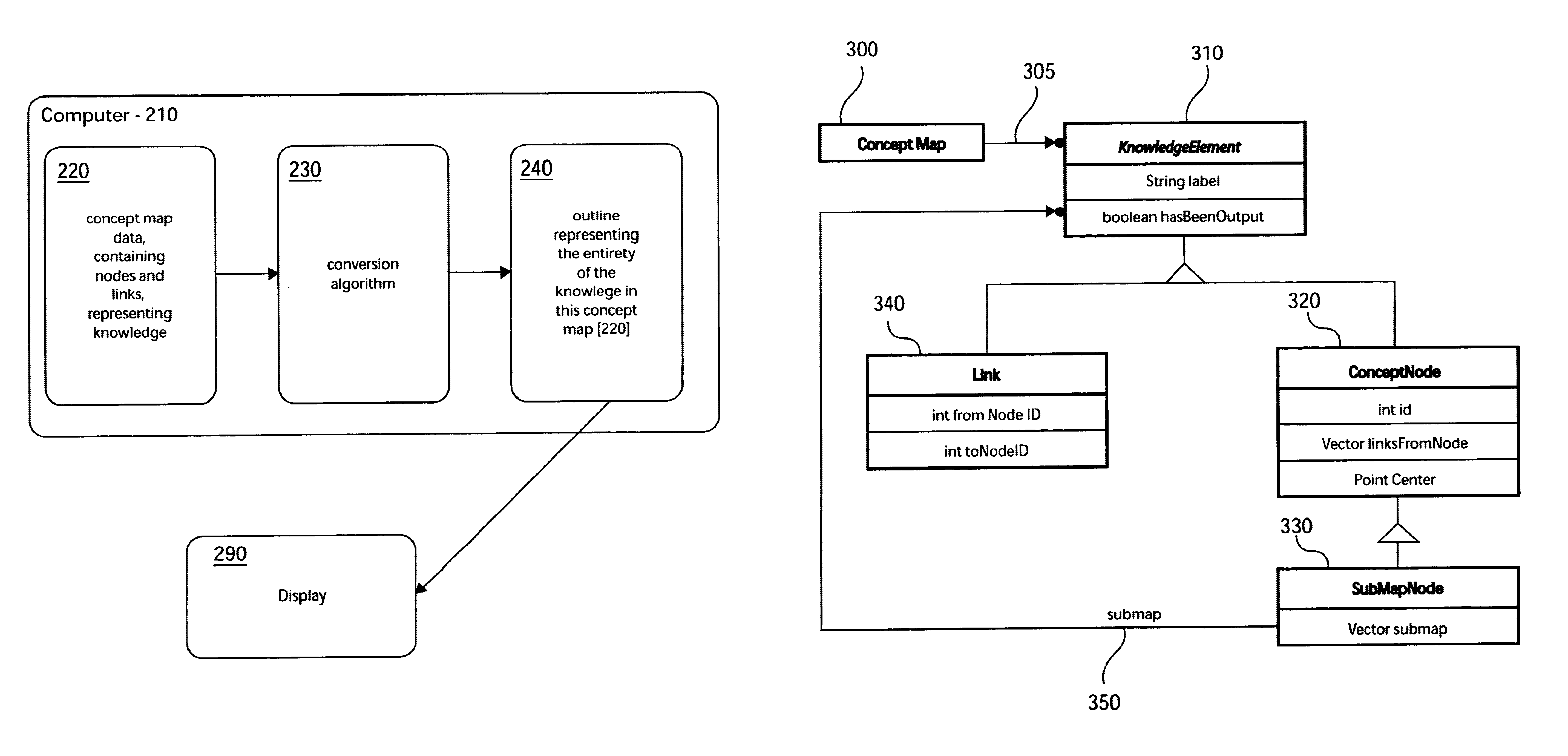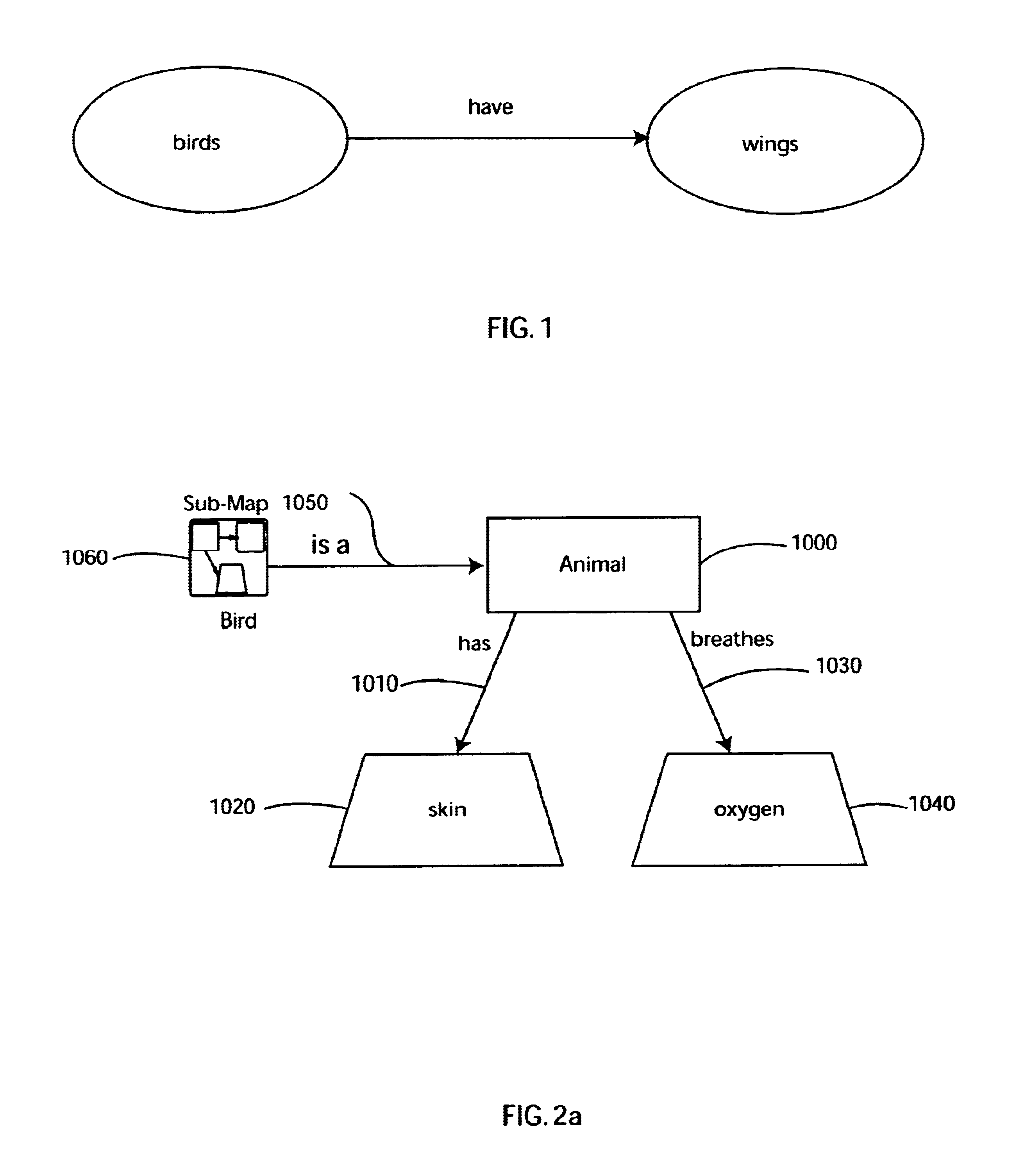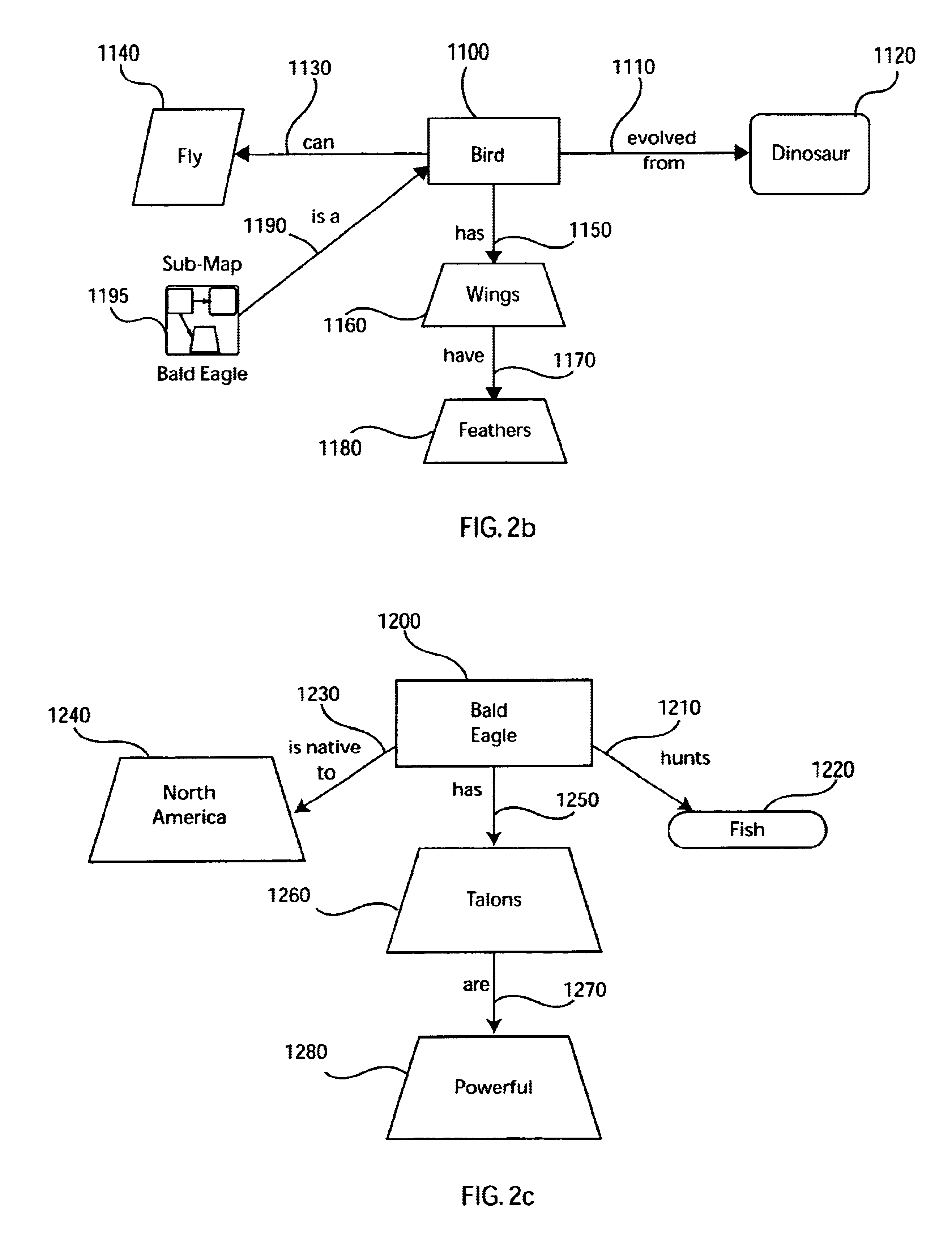System and method for converting node-and-link knowledge representations to outline format
- Summary
- Abstract
- Description
- Claims
- Application Information
AI Technical Summary
Benefits of technology
Problems solved by technology
Method used
Image
Examples
Embodiment Construction
[0036]The present invention provides an improved system and method for translating concept maps or semantic networks into an outline format. This disclosure describes a translation method in which the organization of all thoughts and concepts that exist in a concept map, including the names of all inter-concept relationships and all knowledge at all abstraction or sub-map levels, is presented in a single inclusive outline. The present invention also provides that outlines derived via translation of the knowledge and information in a concept map should incorporate all of the semantic information included in that concept map, and at the same time avoid presenting knowledge or information redundantly.
[0037]In accordance with the present invention, the translations of the concepts map presented above may include the following:
[0038]animal[0039]I. has skin[0040]II. breathes oxygen[0041]. . .
The outline of the second example would look more like (assuming the label on all three links is s...
PUM
 Login to View More
Login to View More Abstract
Description
Claims
Application Information
 Login to View More
Login to View More - R&D
- Intellectual Property
- Life Sciences
- Materials
- Tech Scout
- Unparalleled Data Quality
- Higher Quality Content
- 60% Fewer Hallucinations
Browse by: Latest US Patents, China's latest patents, Technical Efficacy Thesaurus, Application Domain, Technology Topic, Popular Technical Reports.
© 2025 PatSnap. All rights reserved.Legal|Privacy policy|Modern Slavery Act Transparency Statement|Sitemap|About US| Contact US: help@patsnap.com



